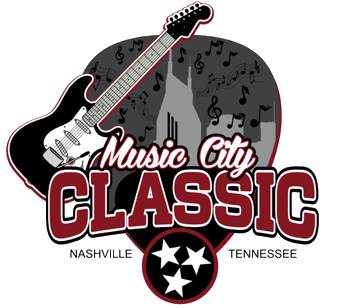Last week, we did a deep dive into college hitters who had a particular knack for annihilating velocity in the strike zone. This week, we look at the hitters who are most-accomplished at handling spin in the strike zone. Everyone scouts and evaluates talent differently. Everyone has a different emotional and mental model that helps dictate how the view position player prospects coming up through baseball. From this chair, along with having the ability to handle velocity, hitters must be able to react to a good breaking ball. “Stuff” only improves as you move up the ladder, and command of that stuff only improves as well.
Identifying which hitters in college baseball have the best track record of handling breaking balls in the zone, and handling it with authority is important. Teams should draft hitters that don’t chase outside of the zone, and when they can handle a slider left in the heart, they should pummel it. It’s a pillar of hitting and, from this chair, a prerequisite to future success.
For this exercise, we looked at every single hitter in college baseball and narrowed their outcomes down to swings on breaking balls inside the strike zone with a velocity north of 80 mph. There’s a lot of crappy breaking balls in college baseball, so qualifying the population with a little velocity should weed out some of the junk. It’s obviously not a perfect variable, but it’s a start. From there, identifying hitters that handled those pitches best and with the most authority was the priority. Anybody with a contact percentage north of 90 percent as well as an average exit velocity of 94 mph on those balls-in-play are highlighted. In order to qualify, players must have seen at least 30 pitches that fit those same parameters. These players not only have a track record of seeing and handling spin in the zone, but doing damage with it as well.
Max Anderson, 3B — Nebraska
Anderson was prominently featured in our Top Fastball Hitters, and represents the only player in the country to be featured on both lists. For that reason, a reasonable argument can be made that Anderson is one of the best hitters in the entire country. Anderson nearly tops the charts in terms of exit velocity for this demographic, and made enough contact to qualify. With a mere 7-percent whiff rate and an average exit velocity north of 95 mph, Anderson not only handles velocity, but he does damage as well. His .412/.458/.791 slash over 53 games this season is indicative of an impact hitter who should go well in the draft. In fact, Anderson became the first player in Big Ten history to hit 15 home runs in a traditional conference play schedule this past weekend. There’s some chase in his game when it comes to spin, but he’s a fighter whose posted a strikeout-rate under 12-percent this season. There’s little doubt his offensive play will transition to pro ball.
Max Anderson takes the home run lead back.
That's his 18th of the year, edging Brice by one. pic.twitter.com/mqqFmuVU56
— Nebraska Baseball (@HuskerBaseball) May 6, 2023
On the defensive end, there’s a few more question marks. He’s a big solid-body third baseman who moves well for the position, though his hands and throwing motion are more of a work-in-progress. Anderson has seen improvements from his hands this year, though scouts see the arm action as being a little awkward and that plays down his arm strength. Even if he can’t hold down third base as a pro, he’s athletic enough to play a little bit of second base, and the bat is more than heavy enough to handle first base too.
Garret Guillemette, C — Texas
Guillemette is one of the better sleepers in this years’ draft class. A transfer from Southern California for the 2023 season, Guillemette immediately became a force for the Longhorns this season posting a .310/.407/.574 slash with 11 homers. As the article might obviously indicate, he did a ton of damage on breaking balls left in the strike zone. Guillemette’s 97 mph average exit velocity on spinners in the zone, as well as his 90-percent contact rate speaks to a guy who can handle the frisbee.
G WAGON!@garretguill smashes a three-run tank and it’s 3-0 Horns in the 1st!#HookEm pic.twitter.com/GHzKSgoxOL
— Texas Baseball (@TexasBaseball) April 2, 2023
Guillemette is a bit of a complete profile from a draft perspective. There isn’t one standout tool, but he does everything well. There’s a bit of chase in his offensive approach, and he’ll swing through velocity at times, but he’s a defensive stalwart who threw out an incredible 40 percent of would-be base-stealers this season. He’s an average receiver of the baseball, but has improved in that category in back-to-back seasons. Guillemette features above average raw power, and could grow into a fantastic platoon backstop, maybe more if the ability to handle velocity in the zone improves.
Kyle Teel, C — Virginia
By now, Kyle Teel lives rent-free in draftnik heads. Annihilating breaking balls is one of the ways his stock has ascended to meteoric levels this season. Teel posted a gaudy .414/.479/.678 slash this season including 12 homers and 4 stolen bases. He struck out 32 times and walked 28 times. Teel features prominently in this draft-model as he connected with 90 percent of the 80 mph breaking balls left in the zone this season, unloading on them at an average exit velocity of 95 mph.
🚫 No Runner Crossing 🚫
Tuft ➡️ O'Ferrall ➡️ Teel
📺: @accnetwork | #GoHoos pic.twitter.com/xtJTjPXLSC
— Virginia Baseball (@UVABaseball) May 25, 2023
Teel is going to go extremely high in this draft. Finding catchers, let alone players who can play up the middle of the diamond, who can do damage offensively is rare. Teel will not only be an accomplished hitter, he’s a plus athlete behind the dish with a solid throwing arm and a grand willingness to give up his body blocking balls in the dirt and make plays at the plate. He’s also one of the very few catchers who is an above-average to plus runner and will provide exorbitant value on the base paths. If there’s one critique, and it’s a noteworthy one, Teel has a tendency to expand the zone quite a bit, though he’s handled those pitches outside of the zone and prolonged at-bats because of it. He’ll need to shave those chases down as the stuff he starts seeing will accelerate on him rather quickly at High-A and Double-A. Still, the ceiling here is a considerable.
Brock Rodden, 2B — Wichita State
Rodden, a 10th round selection by the Oakland Athletics in the 2022 MLB Draft, decided to go back to school in the hopes of juicing his draft stock. That may have happened this year. After slashing .344/.462/.563 as a sophomore, Rodden posted a dashing .371/.474/.701 slash in 2023 with 17 home runs, matching his total from the year prior. He stole 12 bases, nine more than the previous year, and struck out just 27 times. He’s on this list after posting an absurd 100-percent contact rate on 33 breaking balls in the zone north of 80 mph, averaging 94 mph on those balls in play. He was, quite literally, perfect.
He’s 1 of 1.
Brock Rodden is the @American_BSB Preseason Player of the Year ⭐️ pic.twitter.com/Pzja5rG65F
— Wichita State Baseball (@GoShockersBSB) December 28, 2022
Rodden is a fascinating profile. Already 23 years old, he holds almost no leverage in this draft, but the production and underlying metrics of his performance in 2023 should create a bidding war in the 4-5-6 round area. While he likely won’t get full-slot, Rodden could still double the money he would have had to sign for last year. Offensively, it’s not only breaking ball that he feasts on. Rodden has a track record of handling velocity, and had he had a bigger sample of 92 mph fastballs in the zone, he would have been on the fastballs feature as well. Like Teel, Rodden’s only knock is a reasonably high chase rate, something he’ll have to watch in pro ball. Defensively, he’s a solid average glove who possesses strong footwork around the bag with an above average arm. He has every tool necessary to be a perfectly capable starting second baseman at the next level.
Jay Harry, SS — Penn State
Straight up, Harry is one of my favorite players in the 2023 MLB Draft. He’s not the most physically gifted player in this class, but there’s not another player in the country who night after night comes into the clubhouse with a filthier jersey. He’s a scrappy kid who gets the most out of his ability. Harry had a strong year posting a .299/.376/.463 slash with 6 homers and 6 stolen bases. He had nearly as many walks, 20, as he did strikeouts (21). Harry saw 45 breaking balls inside the zone north of 80 mph. He made contact on 97 percent of those swings and averaged 94 mph on those batted balls. To be fair to the process, it should be noted Harry had a ton of foul balls on those swings. But the balls he kept between the white lines were pummeled.
Jay Harry’s fifth homer of the year was clutch! Big-time swing @JayHarry18!#WeAre pic.twitter.com/8trnN2o57l
— Penn State Baseball (@PennStateBASE) April 12, 2023
As previously mentioned, Harry doesn’t have the most intimidating physical tools, but he’s a gritty player who might belong somewhere on day three. All of his raw power presents itself to the pull-side thanks to a whippy bat path. He more often than not utilizes an inside-out swing that neutralizes his power. The whole package will likely never be a double-digit dinger guy, but he’s the type of guy who could run into 25 doubles in a season if given the opportunity. On the high end, maybe he’s a Brad Miller type of profile. Harry is very fun to watch on defense and has a shot to stick at shortstop moving forward.
Anthony Calarco, 1B — Ole Miss
While Calarco is on the older side, draft-eligible for the fourth time as a 23-year-old, he’s one of the better contact hitters in the country and should be a priority for teams on day three of the draft, or potentially as an undrafted free agent. Calarco impressed this season (as he has most seasons) posting a .274/.379/.423 slash with five homers and ten doubles. On breaking balls over 80 mph in the zone, Calarco posted a 94 percent contact rate with an average exit velocity north of 94 mph.
The Anthony Calarco Game™️
Five RBI today for @antcalarco to put the Rebs back on top!
Ole Miss 6, Minnesota 5
Live on @BigTenPlus pic.twitter.com/nxo3ivwxWc— Ole Miss Baseball (@OleMissBSB) March 5, 2023
Calarco is a bat-over-everything type of player with significant raw power, though he struggled to tap into it in the SEC. A transfer from Northwestern, he was a staple in the Runnin’ Rebels lineup this season. He’s rock solid everywhere in terms of approach, bat-to-ball skills, and pure exit velocities. Calarco will turn 24 before the end of the year, and because of his lack of versatility, his draft stock is a bit capped. Still, you’d be hard-pressed to find a more productive hitter since 2018 than this guy.
Here are some players who just missed qualifying under these parameters, but have still been awfully impressive on upper-tier velocity in the zone:
Caleb Ketchup, SS — Lipscomb — 45 pitches – 96% Contact, 90 mph average exit velocity
Josh Rivera, SS — Florida — 34 pitches – 90% Contact, 90 mph average exit velocity
RJ Schreck, OF — Vanderbilt — 55 pitches – 91% Contact, 91 mph average exit velocity
Jack Moss, 1B — Texas A&M — 65 pitches – 90% Contact, 91 mph average exit velocity
Jared Dickey, OF — Tennessee — 33 pitches – 93% Contact, 91 mph average exit velocity
Mitch Jebb, SS — Michigan State — 40 pitches – 100% Contact, 92 mph average exit velocity
Garrett Pennington, 1B — Wichita State — 68 pitches – 92% Contact, 92 mph average exit velocity
Diego Baqueiro, 3B — Loyala Marymount — 43 pitches – 96% Contact, 92 mph average exit velocity
LuJames Groover III, 3B — NC State — 53 pitches – 94% Contact, 93 mph average exit velocity
- The Diamondbacks return for Josh Naylor… - July 25, 2025
- Five 2025 draft picks that could win Rookie of the Year in 2026 - July 21, 2025
- 2025 MLB Draft: The predictions you didn’t know you needed - July 16, 2025















